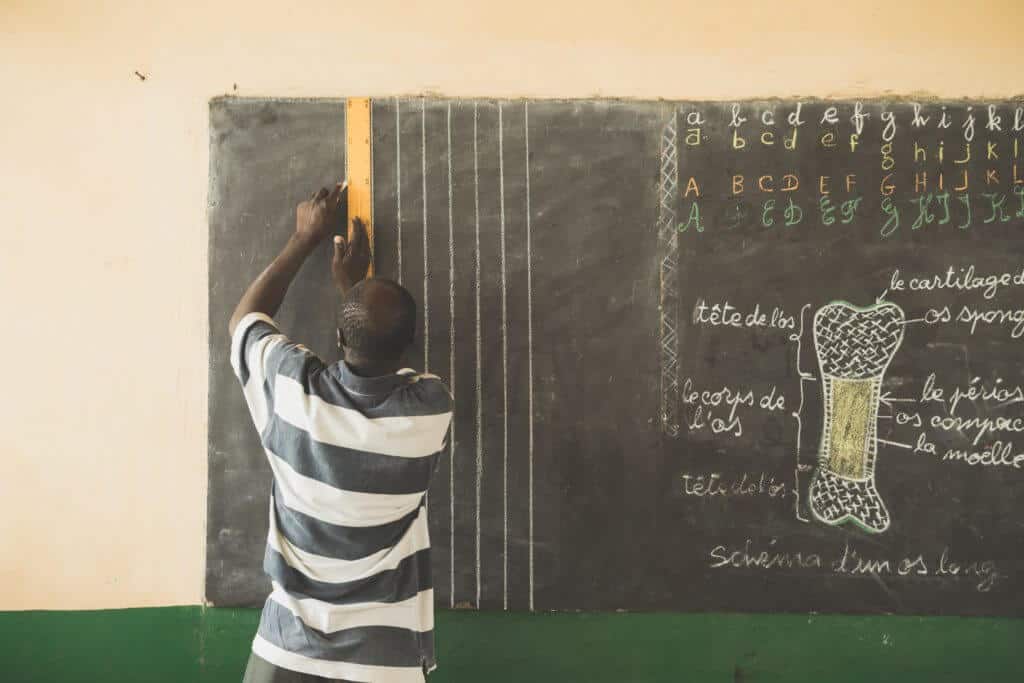
Introduction
Understanding what practice architectures are and how they influence existing and new practice you can better appreciate how practice is constructed and how to go about changing practice in the best possible way. Moreover, it is really helpful in explaining why things are the way they are and provides a framework for unpacking and reconstructing practice.
What are Practice Architectures?
The term practice architectures describe how practices are influenced by a variety of situated and contextual factors (Kemmis, 2012). Practice architectures are similar to other perspectives on educational and curriculum reform since it acknowledges that the reported failures in curriculum change cannot be narrowly attributed to teachers’ mis-interpretations of innovations or policies (Coburn, 2005; Cohen, Moffitt, & Goldin, 2007; Fullan, 2007). The theory suggests that every practice enacted in classrooms is a direct result of a practice architecture consisting of semantic (e.g. cultural-discursive), social (e.g. social-political) and physical (e.g. material-economic) factors (Kemmis, 2012).
Factors Affecting and Effecting Practice
According to Kemmis (2012), a practice architecture has three interdependent arrangements – cultural-discursive, material-economic and social-political – all of these factors ‘hang together’ to create the ‘working conditions’ or environment to either enable or constrain particular practices.

Cultural-Discursive – This arrangement can be observed in the language used and culture of an organisation this is often referred to as the semantic space. Kemmis et al. (2014, p. 32) argue that we can see this feature at work in terms of ‘what language or specialist discourse is appropriate for describing, interpreting, and justifying the practice’. For example, a teacher might justify their use of a teacher-led approach by using terms or phrases such as ‘tighter control’, ‘safer’, ‘well-managed’ and ‘students remain on task’ (Goodyear, Casey and Kirk, 2017).
Social-Political – The social-political occurs in a social space and is the medium of power and solidarity between those with a specific investment in a particular practice. This arrangement can be seen at work in the organisation’s functions, rules and roles, and in the shared understandings and practical agreements a group of practitioners have about what to do in particular situations (Kemmis et al., 2014). For example, teachers within the same school may have shared understandings that a teacher-led approach is most effective for enabling students to learn subject content. This understanding could be further endorsed through national and school policies and curriculum documents that suggest successful lessons occur when learning is observable and when teachers manage and control an effective learning environment (Goodyear et al., 2017).
Material-Economic – can be found in the physical space through activity and work. Activity and work are the resources that make practice possible. For example, this feature works by ‘constraining what can be done amid the physical set-ups of various kinds of rooms and indoor and outdoor spaces in a school’ (Kemmis et al., 2014, p. 32). A classroom with tables in rows and a whiteboard at the front is a good example of this arrangement. This kind of layout of a teaching space predetermines the one-way conveyance of information, limits opportunities for dialogue between students, supports a well-managed and teacher-controlled environment and subsequently, ‘hangs together’ with the cultural-discursive and the social-political arrangements that also endorse knowledge and discipline (Goodyear et al., 2017).
Practice Architectures and Physical Education
Physical education as a subject like many others is entrenched with historical and contextual factors and traditions that shape the cultural-discursive, social-political, and material-economic landscape and features of practice architectures. The major challenge for physical education at present surrounds its perceived value and place within education. Today’s secondary education system is very focussed on attainment and progress within a narrow range of subject areas, this has led to systems being created that maximise student progress and attainment, but these systems do not necessarily lend themselves to creating well rounded, diverse and robust individuals. In relation to practice architectures the cultural-discursive discourse often relegates physical education to a low status low value subject, the social-political will often reinforce that physical education is of lesser importance than other subjects and thus the material-economic investment is often neglected. If physical education is to regain its impact and value on student health and wellbeing the wider influences as well as the practice architectures need to be restructured in order to provide an environment whereby physical education can shape its practice to achieve these outcomes unrestrained by cultural-discursive, social-political and material-economic factors.
Summary
Through the consideration of the cultural-discursive, social-political and material-economic arrangements of practice architectures, it seems reasonable to argue that in order for there to be new practices that are ‘innovative’ and for longer term change to occur, new practice architectures need to be created (Goodyear et al., 2017). In this sense, practice architectures can help us think differently about sustainable curriculum renewal. Instead of being primarily concerned with the innovation, professional learning or the approach to pedagogical change, practice architectures suggest that pedagogical change is either constrained or enabled by cultural, social and material features of schools.
References
- Coburn, C. E. (2005). Shaping teacher sensemaking: School leaders and the enactment of reading policy. Educational Policy, 19, 476–509.
- Cohen, D. K., Moffitt, S. l., & Goldin, S. (2007). Policy and practice: The dilemma. American Journal of Education, 113, 515–548.
- Fullan, M. (2007). The new meaning of educational change. London: Routledge.
- Goodyear, V. A., Casey, A. & Kirk, D. (2017) Practice architectures and sustainable curriculum renewal. Journal of Curriculum Studies. 49:2, pp.235-254. doi.org/10.1080/00220272.2016.1149223
- Kemmis, S. (2012). Researching educational praxis: Spectator and participant perspectives. British Educational Research Journal, 38, 885–905.
- Kemmis, S., Wilkinson, J., Edwards-Groves, C., Hardy, I., Grootenboer, P., & Bristol, l. (2014). Changing practices, changing education. London: Springer.


Responses